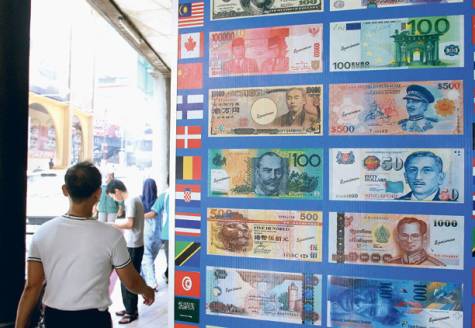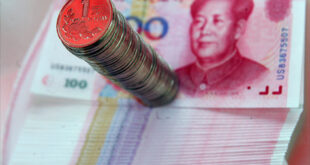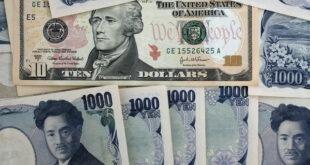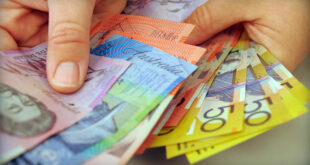Asian currencies had the best quarter in two years after global policy makers announced plans to pump money into financial markets to support growth, spurring capital flows into higher-yielding assets.
The Bloomberg-JPMorgan Asia Dollar Index, which tracks the region’s most-active currencies, rose 1.8 percent since June 30 as the Federal Reserve, the European Central Bank and theBank of Japan (8301) expanded bond-purchases programs to lower borrowing costs. China will use “preemptive policy” to bolster growth in Asia’s biggest economy, Premier Wen Jiabao said this month. India’s rupee led gains, reaching a five-month high, and China’s yuan surged to the highest since 1993.
“The underlying trend is still favorable for emerging currencies going into 2013, due to interest-rate and growth advantage over developed economies,” said Roy Teo, a senior currency strategist in Singapore at ABN Amro Bank NV. “China’s growth is slowing and further monetary stimulus including interest-rate cuts can be expected.”
The rupee strengthened 5.3 percent this quarter to 52.86 per dollar in Mumbai, according to data compiled by Bloomberg. Malaysia’s ringgit climbed 3.5 percent to 3.0620 and the won closed 3.1 percent stronger at 1,111.38, near an 11-month high. The yuan rose 1.1 percent to 6.2849 for its best quarter in 2012.
Fund Inflows
Investors pumped $9 billion into the stock markets of India, Indonesia, South Korea and Taiwanthis month, exchange data show. The Asia Dollar Index hit 117.35 yesterday, the highest since March 9. The gauge’s 60-day historical volatility fell to 2.70 percent from 3.46 percent on June 29. The MSCI Asia Pacific Index (MXAP) of shares added 4.6 percent this quarter.
“With Europe and the U.S. taking a monetary-easing stance, funds tend to move to bonds and stocks in Asia that offer higher yields,” said Shigehisa Shiroki, chief trader on the Asian and emerging-markets team at Mizuho Corporate Bank Ltd. in Tokyo.
Asian currencies gained yesterday after Spain approved its austerity budget, boosting optimism Europe is moving toward resolving its debt crisis. Other reports showed factory production inJapan and South Korea shrank in August from July.
“There were doubts on the progress of Europe’s debt crisis, and Spain’s austerity budget news is a relief,” said Jude Noh, Seoul-based chief currency trader at Suhyup Bank.
Won, Ringgit
The won rebounded from last quarter’s 1.1 percent slide as Standard & Poor’s this month raised South Korea’s long-term foreign-currency debt rating by one step to A+, the fifth- highest level. Moody’s Investors Service and Fitch Ratings also raised their rankings for Korea this quarter.
The yuan rallied before a weeklong National Day holiday starting Oct. 1. The Shanghai Composite (SHCOMP) Index of shares jumped 4.1 percent in the past two days, on optimism policy makers plan to unveil measures to boost growth and the equity market.
“Funds are flowing back into the market as people bet China will soon act more aggressively to revive growth,” said Kenix Lai, a Hong Kong-based foreign-exchange analyst at Bank of East Asia Ltd. (23) “There’s always expectations the government will announce important polices before or at the end of a long holiday. The stock market is also rallying on stimulus bets.”
The ringgit gained as Prime Minister Najib Razak unveiled Malaysia’s budget for 2013 in parliament yesterday.
Malaysian Budget
The $279 billion economy will expand between 4.5 percent and 5.5 percent in 2013, compared with a projected 4.5 percent to 5 percent this year, the Finance Ministry said in an annual report released in Kuala Lumpur yesterday. It estimated the budget deficit will narrow to 4 percent of gross domestic product from 4.5 percent this year.
“Any attempt to streamline the Malaysian budget will be seen to be positive for the ringgit and government bonds,” said Vishnu Varathan, a Singapore-based economist at Mizuho Corporate Bank Ltd.
Elsewhere, Thailand’s baht gained 3.1 percent this quarter to 30.80 per dollar and Taiwan’s dollar advanced 1.9 percent to NT$29.342. The Philippine peso rose 1.1 percent to 41.71 and Indonesia’s rupiah weakened 1.7 percent to 9,589. Vietnam’s dong weakened to 20,890 from 20,878.
The Bloomberg-JPMorgan Asia Dollar Index, which tracks the region’s most-active currencies, rose 1.8 percent since June 30 as the Federal Reserve, the European Central Bank and theBank of Japan (8301) expanded bond-purchases programs to lower borrowing costs. China will use “preemptive policy” to bolster growth in Asia’s biggest economy, Premier Wen Jiabao said this month. India’s rupee led gains, reaching a five-month high, and China’s yuan surged to the highest since 1993.
“The underlying trend is still favorable for emerging currencies going into 2013, due to interest-rate and growth advantage over developed economies,” said Roy Teo, a senior currency strategist in Singapore at ABN Amro Bank NV. “China’s growth is slowing and further monetary stimulus including interest-rate cuts can be expected.”
The rupee strengthened 5.3 percent this quarter to 52.86 per dollar in Mumbai, according to data compiled by Bloomberg. Malaysia’s ringgit climbed 3.5 percent to 3.0620 and the won closed 3.1 percent stronger at 1,111.38, near an 11-month high. The yuan rose 1.1 percent to 6.2849 for its best quarter in 2012.
Fund Inflows
Investors pumped $9 billion into the stock markets of India, Indonesia, South Korea and Taiwanthis month, exchange data show. The Asia Dollar Index hit 117.35 yesterday, the highest since March 9. The gauge’s 60-day historical volatility fell to 2.70 percent from 3.46 percent on June 29. The MSCI Asia Pacific Index (MXAP) of shares added 4.6 percent this quarter.
“With Europe and the U.S. taking a monetary-easing stance, funds tend to move to bonds and stocks in Asia that offer higher yields,” said Shigehisa Shiroki, chief trader on the Asian and emerging-markets team at Mizuho Corporate Bank Ltd. in Tokyo.
Asian currencies gained yesterday after Spain approved its austerity budget, boosting optimism Europe is moving toward resolving its debt crisis. Other reports showed factory production inJapan and South Korea shrank in August from July.
“There were doubts on the progress of Europe’s debt crisis, and Spain’s austerity budget news is a relief,” said Jude Noh, Seoul-based chief currency trader at Suhyup Bank.
Won, Ringgit
The won rebounded from last quarter’s 1.1 percent slide as Standard & Poor’s this month raised South Korea’s long-term foreign-currency debt rating by one step to A+, the fifth- highest level. Moody’s Investors Service and Fitch Ratings also raised their rankings for Korea this quarter.
The yuan rallied before a weeklong National Day holiday starting Oct. 1. The Shanghai Composite (SHCOMP) Index of shares jumped 4.1 percent in the past two days, on optimism policy makers plan to unveil measures to boost growth and the equity market.
“Funds are flowing back into the market as people bet China will soon act more aggressively to revive growth,” said Kenix Lai, a Hong Kong-based foreign-exchange analyst at Bank of East Asia Ltd. (23) “There’s always expectations the government will announce important polices before or at the end of a long holiday. The stock market is also rallying on stimulus bets.”
The ringgit gained as Prime Minister Najib Razak unveiled Malaysia’s budget for 2013 in parliament yesterday.
Malaysian Budget
The $279 billion economy will expand between 4.5 percent and 5.5 percent in 2013, compared with a projected 4.5 percent to 5 percent this year, the Finance Ministry said in an annual report released in Kuala Lumpur yesterday. It estimated the budget deficit will narrow to 4 percent of gross domestic product from 4.5 percent this year.
“Any attempt to streamline the Malaysian budget will be seen to be positive for the ringgit and government bonds,” said Vishnu Varathan, a Singapore-based economist at Mizuho Corporate Bank Ltd.
Elsewhere, Thailand’s baht gained 3.1 percent this quarter to 30.80 per dollar and Taiwan’s dollar advanced 1.9 percent to NT$29.342. The Philippine peso rose 1.1 percent to 41.71 and Indonesia’s rupiah weakened 1.7 percent to 9,589. Vietnam’s dong weakened to 20,890 from 20,878.
Bloomberg
 Asia Finance News Asia finance news, banking, market analysis, business, Forex, trade, Cryptocurrency as it is happening in Asia. Trusted gateway for Asian financial news.
Asia Finance News Asia finance news, banking, market analysis, business, Forex, trade, Cryptocurrency as it is happening in Asia. Trusted gateway for Asian financial news.





